Bulletin boards hang on the walls of almost every school. They share information, exhibit work, and highlight student achievements. Boards can use pre-packaged items such as borders, letters, and frames. Boards can also be DIY-ed from scratch. Sometimes, they are purely functional, sometimes slightly decorated, and once in a while, you see a great one that blows your mind!
Are your bulletin boards an afterthought, or do you consider how they can enhance student work? If you want to level up your bulletin boards but are stumped on where to start, we have you covered. Toss aside the pre-assembled packages and opt for a bulletin board that is a work of art—an art installation created by your students.
Let’s recap four types of bulletin boards and then dive into three out-of-the-box display ideas.
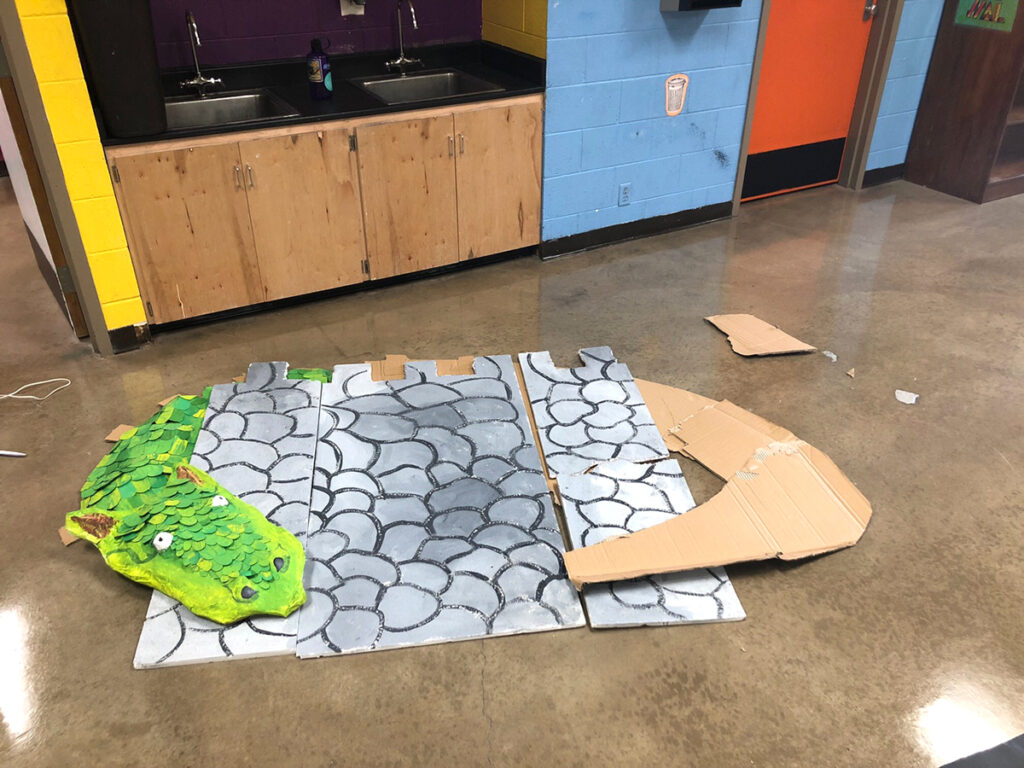
Here are four common types of bulletin boards.
Many of us imagine a bulletin board as a big corkboard screwed into the school’s cinderblock walls and edged with a piece of ugly silver metal. Let’s take a quick look at other forms of bulletin boards you can consider when brainstorming your next display.
- No Bulletin Board
If you are a traveling art teacher or an art-on-a-cart educator, there is a chance you may not have a bulletin board. If this is the case, ask around! Often, there are bulletin boards at your administrative headquarters that will benefit from student artwork. Another option is good old poster board. Attach the information or artwork and temporarily post them on the walls or your cart. - Interactive
Students can add to and take items away from the board. For example, students affix a sticky note with their answer or place a thumb tack on their favorite color. This website has great ideas you can adapt to fit the art room. - Traditional
Bulletin boards can display the work of students or master artists and share information. In the art classroom, a traditional bulletin board can share an artist’s biography, a collection of artwork by the same artist, or artwork from a specific movement, time period, or culture. - Digital
SMART Boards or similar “digital bulletin boards” can be a combination of interactive and traditional bulletin boards. Take photos of students at work and display them on the digital board when not in use. Add a compilation of images with a click of a finger. Include preplanning, early stages of project development, near completion, and the end of a project.
Discover tips to create a collaborative bulletin board display with three wow-factor themes.
If you want to bring your bulletin board game to the next level, keep reading for a collaborative approach that will exude creativity and wonder. Grab the attention of staff and students and make them stop in their steps when they pass by your room!
Consider a display where all classes contribute. Designate a different part of the bulletin board display for each class. This is a great way to exhibit work if you organize your curriculum thematically across grade levels. From underwater to state-specific to barren deserts, dragons, and castles, have your students work together to showcase their art in an installation display.
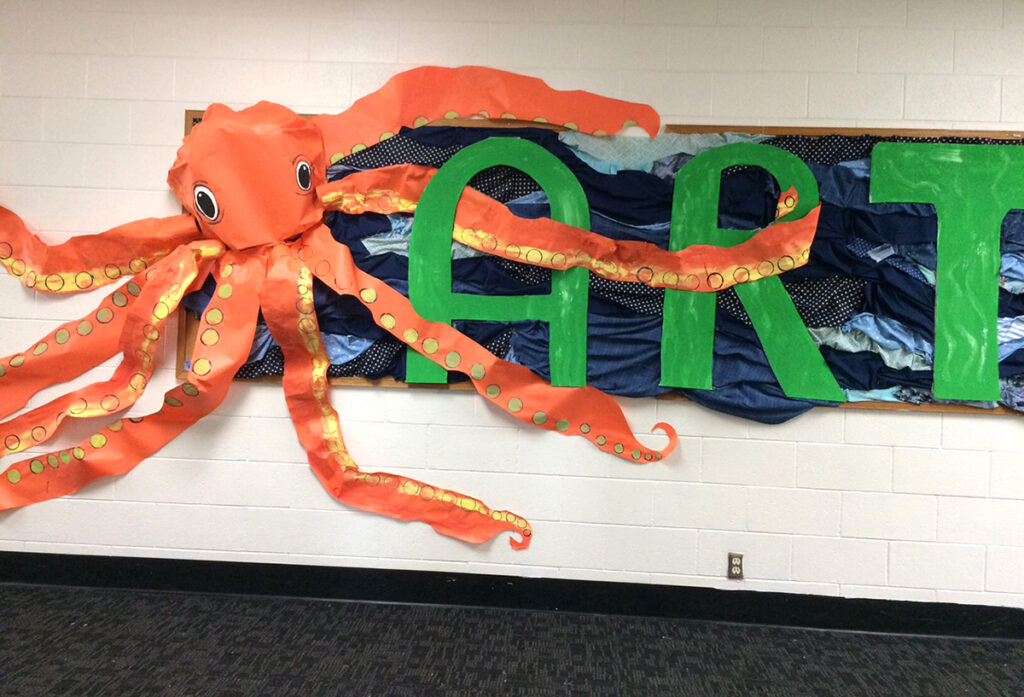
1. Octopus ART
This giant octopus friend is sure to bring a smile to all who view it! Use donated fabric to create the texture of soft waves in the background. Students relief print suction cups on the tentacles. Bend, wrap, and twist paper tentacles to create form and depth. Paint jumbo cardboard letters. Students scratch a variety of lines out of the wet paint to mimic seaweed’s texture.
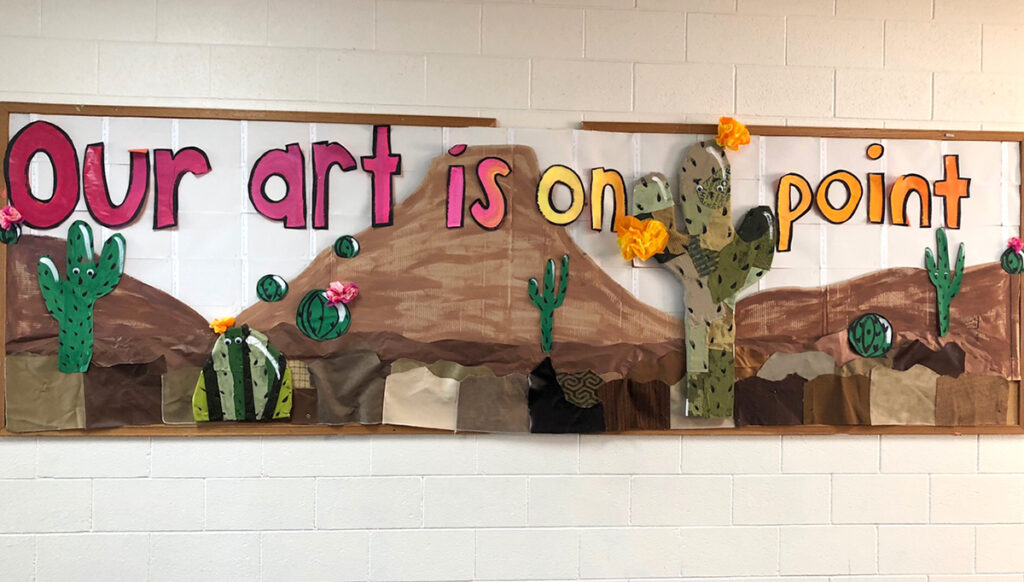
2. Cactus Landscape
From under the sea to a hot, dry desert, this bulletin board demonstrates more elements of art. Students can blend gradients to create a sunrise or sunset. Discuss atmospheric perspective when creating the desert mountains and cliffs. Attach more donated fabric scraps to create visual interest with the desert sand in the foreground. Use recycled cardboard to sculpt mountain ranges or cacti. Play with the corrugated portions to add even more texture.
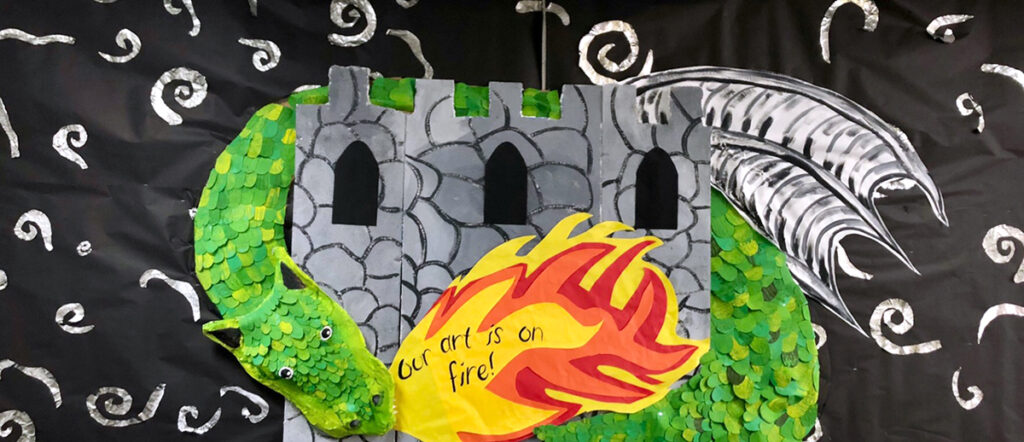
3. Dragon and Castle
Go back in time and construct a Medieval castle. Use aluminum foil to create magical swirls to bounce and reflect light. Students paint various hues of green on thick scrap papers, like used manila folders. Cut out scales in a variety of sizes and arrange them to form a dragon.
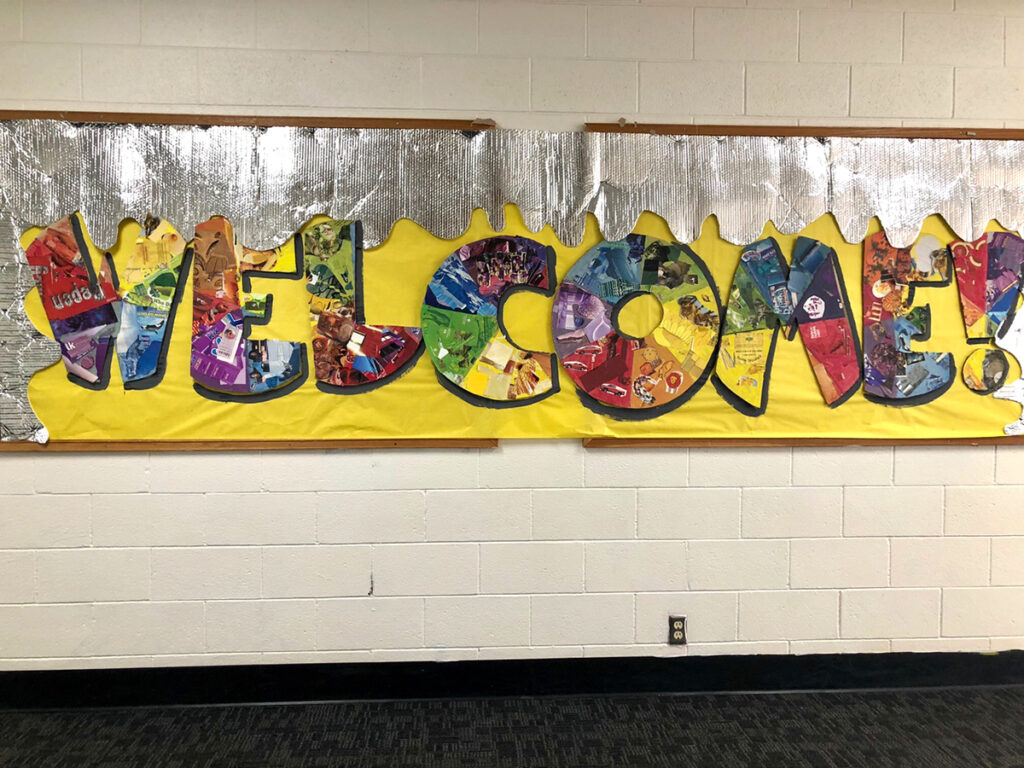
Bonus: Color Wheel Welcome
Do you have a ton of unclaimed artwork laying around at the end of the school year? Cut them up and transform them into a new display to welcome students the following school year. This particular bulletin board used leftover color wheels to provide students, families, and staff with a vibrant welcome!
Bulletin boards are essential to showcase student work and share pertinent information. We have the creative power to build intriguing displays to boost school morale and include every student. Take advantage of your designated board space or find another unclaimed bulletin board in your school or administrative offices. Use the three display ideas above or brainstorm your own theme to showcase your students’ work in a fresh and fun way. Here’s to a new era of bulletin boards outside of the box!
Share your favorite bulletin board display.
What hacks, themes, or tips do you have for creating dynamic displays?
Magazine articles and podcasts are opinions of professional education contributors and do not necessarily represent the position of the Art of Education University (AOEU) or its academic offerings. Contributors use terms in the way they are most often talked about in the scope of their educational experiences.





